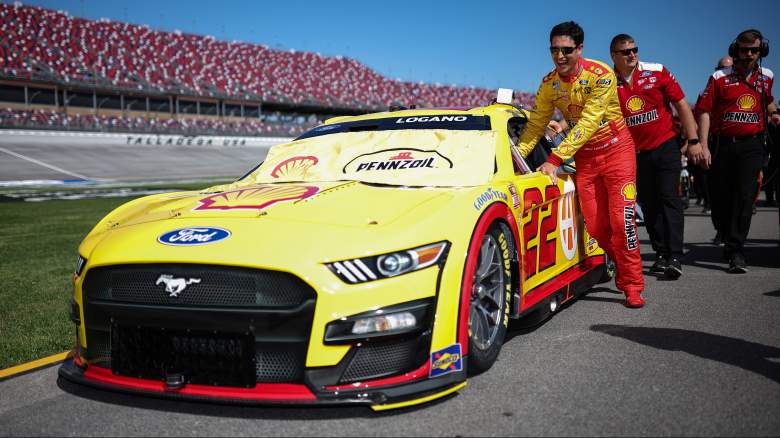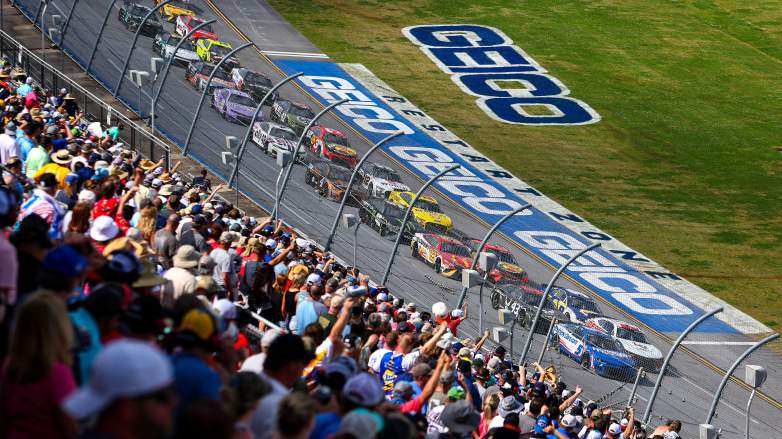
NASCAR Cup Series drivers used to be able to avoid wrecks at superspeedways by dropping to the rear of the field. This is no longer as realistic of an option due to the Next Gen cars.
Joey Logano is a fitting example. He went against his nature during the 2022 YellaWood 500, and he stayed near the back of the field to avoid the inevitable wrecks. However, these incidents did not occur during the final two stages, which left Logano buried in the field.
“I’m not doing that ever again,” Logano said during a pre-qualifying media session at Talladega Superspeedway. “No. They never wrecked. I finished 30th when I raced. I didn’t race, and I finished 30th, so I might as well race this year again and still have a chance to win.”
Logano is not the only Cup Series driver to take this viewpoint. Justin Haley is another as his strategy greatly depends on how he qualified. If he starts near the front, he tries to keep in that position instead of giving up spots and potentially remaining buried around 30th.
“Yeah, you can’t do that anymore,” Aric Almirola added. “It seems like you gotta go race and you got to put yourself in position all day to be there up front at the end. If you find yourself back in the field, it’s really hard with this car and this package to knife your way through the field.”
The Ability To Form a Third Lane Impacts the Racing

GettyCup Series drivers race at Talladega Superspeedway.
One of the reasons why the drivers were able to drop to the rear of the field and then move back up is that they could form a third lane. They could get some help from other drivers and then begin to challenge the leaders.
This is no longer possible with the Next Gen cars. The Cup Series drivers were unable to form this third lane during the 2022 races at Talladega Superspeedway, and many expect this trend to continue in 2023.
“When there is only two-wide racing, it’s a lot calmer,” Almirola said. “It’s not as hectic and chaotic, and you can manage those runs a lot better when you are only looking at two lanes.
“So I think that’s the big driving factor on how aggressive and how crazy racing is — whether or not two lanes actually turn into three or four or if it just stays two lanes kind of single file around the bottom of the race track.”
Pit stops Become More Important
With the field moving to two wide for the majority of superspeedway races, there are fewer opportunities for drivers to make big gains over the course of the race. Instead, they have to hope that they can avoid any wrecks that may occur.
The other major factor that plays a role is the pit stop. Each stop has to be perfect for these drivers to avoid losing positions and getting knocked out of contention for the win. A perfect pit stop can also help them move within reach of a win at a critical point of the race.
This is something that Kyle Busch addressed during his media session. Qualifying does not particularly affect how he approaches each superspeedway race. He just uses the same strategy behind the wheel once the green flag drops.
“The first stage of the race, you just try to bide your time and ride around through the first pit stop and execute well on pit road and get yourself the track position,” Busch said.
“You need to finish the stage strong, but the way that the end of these stages kind of cycle around and cycle through, you can still make up a little bit.”
Comments
Next Gen Car Alters Strategies for Talladega Superspeedway